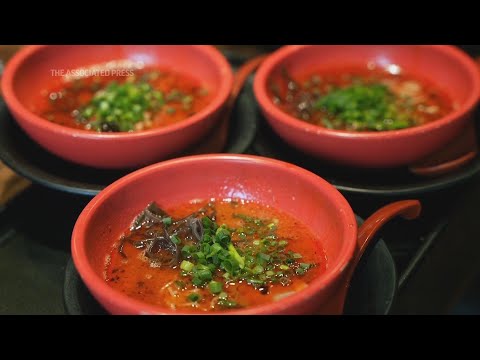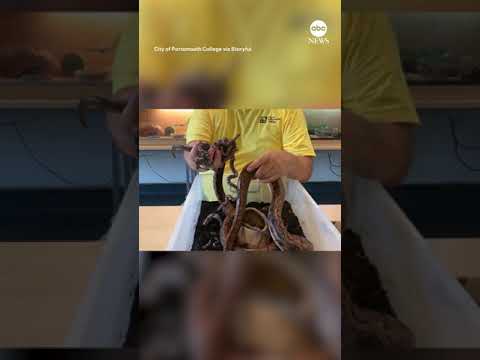(25 Apr 2024)
RESTRICTION SUMMARY:
ASSOCIATED PRESS
Tokyo, Japan – 2 April 2024
1. Mid of staff grilling toppings for ramen
2. Wok on fire, chef adding soup to wok
3. SOUNDBITE (English) Frank Striegl, ramen tour organizer:
++SOUNDBITES PARTLY OVERLAID WITH THE FOLLOWING SHOTS++
“Noodles and soup around the world is consumed in so many different countries. A lot of countries in the world have their own versions of ramen in a way, so I think because of that, it’s a dish that’s easy to understand, it’s the dish that’s easy to get behind.”
4. Mini bowls of ramen being prepared for tour
5. Participants entering ramen shop
6. Various organizer explaining how tour works, menu
7. Waiter bringing out ramen bowls
8. Bowls of ramen
9. Woman eating ramen
STORYLINE:
Often cooked right before your eyes behind dingy counters, the noodle dish starts here at around 1,000 yen (approx. $6.50 USD), and comes in various flavors and local versions.
There’s salty, soy-based “shoyu” or “miso” paste. Perhaps red-hot spicy with a dash of chili. Sometimes there’s no soup at all, but a sauce to dip the noodles in.
The curly noodles are lighter than the darker buckwheat “soba,” or “udon,” which are also usually flatter or thicker.
Ramen has also surged in popularity in the U.S., South Korea and other countries in the past 15 years or so.
Menus at the top 500 U.S. restaurant chains have 6% more mentions of ramen than they did a year ago, according to Technomic, a research and consulting company for the restaurant industry.
Some Japanese frequent ramen places two or three times a week. They emerge, dripping with sweat, smacking their lips.
"A lot of countries in the world have their own versions of ramen in a way, so I think because of that, it’s a dish that’s easy to understand, it’s the dish that’s easy to get behind.” says Frank Striegl, as he leads a dozen American tourists through the back alleys of Tokyo’s funky Shibuya district on what he calls “the ultimate ramen experience.”
The crowd is often led behind a shabby doorway, sometimes down narrow stairs, to a dim-lit table where ramen gets served in tiny bowls, practically the size of a latte cup, or about a quarter of a regular ramen bowl.
That’s so guests can try six kinds of ramen, two at each spot on the tour.
One restaurant offers “Hokkaido classics” from the northernmost main island, while another offers “Fukuoka fusion,” from the southern main island of Kyushu. It includes a green ramen, similar to pasta el pesto.
Syuuichi, which means “once a week,” features curry-flavored ramen.
While tour participants munch their noodles, a tour organiser outlines a brief history of ramen: Its roots date back to the samurai era when a shogun took a fancy to Chinese noodles, setting off the localizing journey for ramen that continues today.
AP Video by Hiromi Tanoue and Ayaka McGill.
===========================================================
Clients are reminded to adhere to all listed restrictions and to check the terms of their licence agreements. For further assistance, please contact the AP Archive on: Tel +44(0)2074827482 Email: info@aparchive.com.
Find out more about AP Archive: http://www.aparchive.com/HowWeWork
Twitter: https://twitter.com/AP_Archive
Facebook: https://www.facebook.com/APArchives
Instagram: https://www.instagram.com/APNews/
You can license this story through AP Archive: http://www.aparchive.com/metadata/youtube/21d4413068f940c0bd93aeaab133db1e





